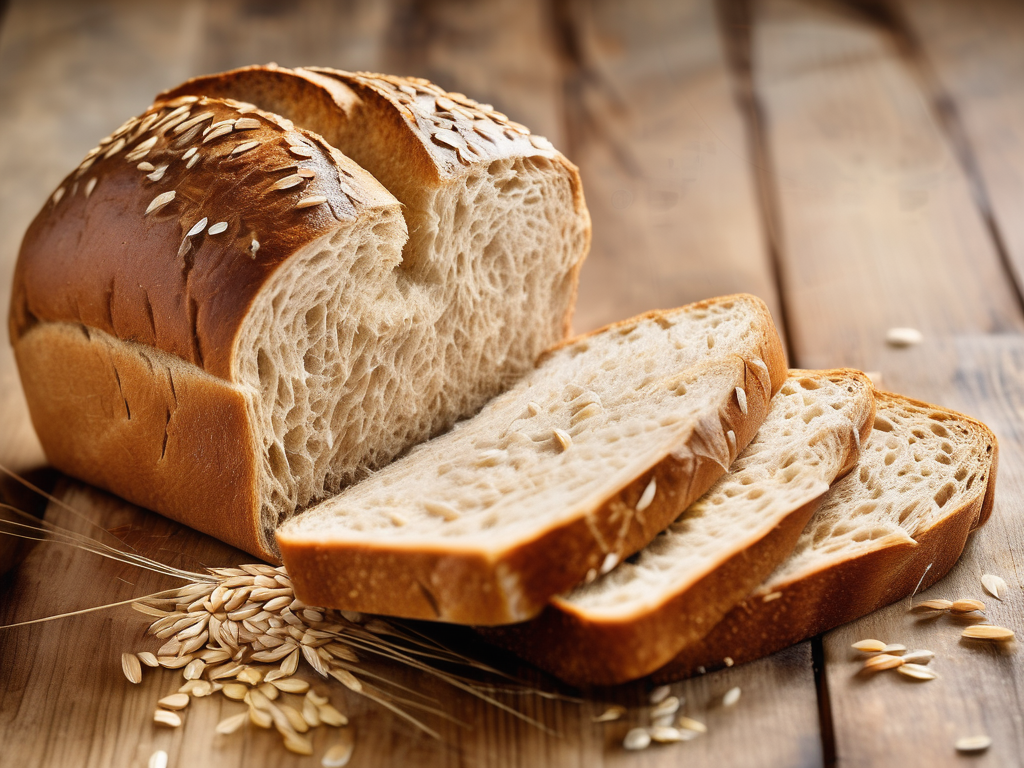
How to Prevent Mold on Whole Wheat Sliced Bread (Unopened) in Humid Climates
Get Your Free Food Safety Cheat Sheet
30 most common foods with instant answers. Print it and stick it on your fridge—completely free!
How to Prevent Mold on Whole Wheat Sliced Bread (Unopened) in Humid Climates
In humid climates, preventing mold growth on whole wheat sliced bread that is unopened can be a challenge. Mold spores are everywhere, and they thrive in warm, moist environments, making bread an ideal breeding ground. However, with the right storage techniques and precautions, you can extend the shelf life of your bread and keep it mold-free for longer. In this blog post, we will explore effective strategies to prevent mold on whole wheat sliced bread in humid climates. (Bread whole wheat sliced unopened)
Understanding Mold Growth on Bread
Before we delve into prevention methods, it's essential to understand why mold grows on bread in the first place. Mold spores are present in the air and can easily settle on the surface of bread. When exposed to moisture and warmth, these spores germinate and form visible mold colonies. Whole wheat bread, with its higher nutrient content, is particularly susceptible to mold growth.
Factors that Contribute to Mold Growth on Bread
- Humidity: High humidity levels provide the ideal environment for mold to thrive.
- Temperature: Warm temperatures accelerate mold growth.
- Air Circulation: Poor ventilation can trap moisture around the bread, promoting mold growth.
- Packaging: Inadequate packaging can allow moisture to penetrate the bread, leading to mold development.
Tips for Preventing Mold on Whole Wheat Sliced Bread
To keep your whole wheat sliced bread mold-free in humid climates, follow these practical tips:
1. Store Bread in a Cool, Dry Place
- Avoid Direct Sunlight: Store bread away from direct sunlight and heat sources to prevent moisture buildup.
- Use Airtight Containers: Transfer the unopened bread to airtight containers to protect it from humidity.
2. Choose the Right Storage Location
- Refrigeration: In humid climates, refrigerating unopened bread can help extend its shelf life by slowing down mold growth.
- Freezing: If you don't plan to consume the bread immediately, consider freezing it in a sealed bag to preserve freshness.
3. Monitor Expiration Dates
- Check Best-By Date: Pay attention to the expiration date on the packaging and consume the bread before it expires to reduce the risk of mold growth.
4. Handle Bread Properly
- Avoid Touching with Bare Hands: Handle the bread with clean hands or use utensils to prevent transferring mold spores.
- Seal Opened Packages: If you've opened the bread, reseal the packaging tightly to maintain freshness and prevent mold.
5. Inspect Regularly
- Visual Inspection: Periodically check the bread for any signs of mold growth, such as discoloration or a musty smell.
- Dispose of Moldy Bread: If you spot mold on the bread, discard it immediately to prevent cross-contamination.
Conclusion
Preventing mold on whole wheat sliced bread in humid climates requires proactive measures to control humidity, temperature, and storage conditions. By following the tips outlined in this blog post and storing your bread properly, you can enjoy fresh, mold-free bread for longer periods. Remember that mold growth on bread not only affects its quality but also poses health risks if consumed. Stay vigilant, practice good food safety habits, and savor every slice of your whole wheat bread without the worry of mold contamination.
Remember, prevention is key when it comes to preserving the freshness and safety of your food. By taking simple steps to store your whole wheat sliced bread properly, you can enjoy it without the risk of mold contamination. [Click here](/food/bread whole wheat sliced unopened) for more information on whole wheat sliced bread. (Bread whole wheat sliced unopened)
Related Posts
Here are some other articles you might find helpful:
- How to Store Whole Wheat Sliced Unopened Bread for Maximum Freshness
- Extending the Shelf Life of Whole Wheat Sliced Bread Unopened in Hot Weather
- How to Tell if Whole Wheat Sliced Bread (Unopened) Has Gone Bad
- Creative Recipes Using Whole Wheat Sliced Bread Past Its Expiration Date
- The Best Way to Store Whole Wheat Sliced Unopened Bread for Maximum Freshness
Authoritative Food Safety References
These agencies and university labs inform every tip and health precaution we publish.
USDA FoodKeeper – Cold Storage Guidelines
Official refrigerator, freezer, and pantry timelines maintained by the U.S. Department of Agriculture.
Visit USDA FoodKeeperFDA Produce Safety Rule & Grower Guidance
Field-to-fridge handling practices that prevent contamination of fruits, vegetables, and leafy greens.
Visit FDA Produce SafetyCDC Foodborne Illness Prevention Hub
Surveillance-backed guidance on pathogens, symptoms, and steps to reduce foodborne illness risk.
Visit CDC Food SafetyUC Davis Postharvest Technology Center
University research detailing optimal storage atmospheres for produce after harvest.
Visit UC Davis PostharvestPenn State Extension – Home Food Preservation & Safety
Peer-reviewed extension bulletins on safe canning, chilling, and reheating practices.
Visit Penn State ExtensionGet Your Free Food Safety Cheat Sheet
30 most common foods with instant answers. Print it and stick it on your fridge—completely free! Want more? Upgrade to the complete guide with 70+ foods.
Scan your food directly and get instant safety info using our AI-powered camera feature.